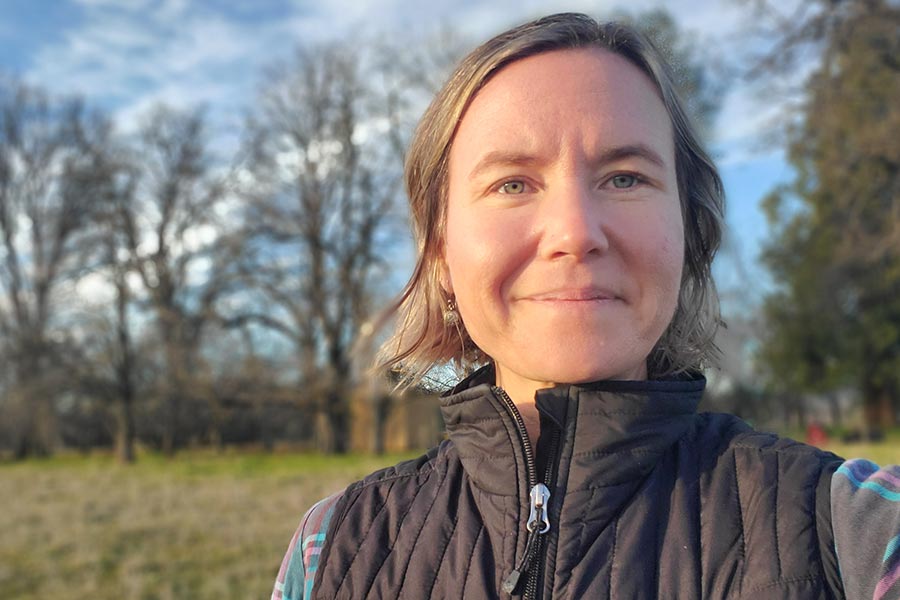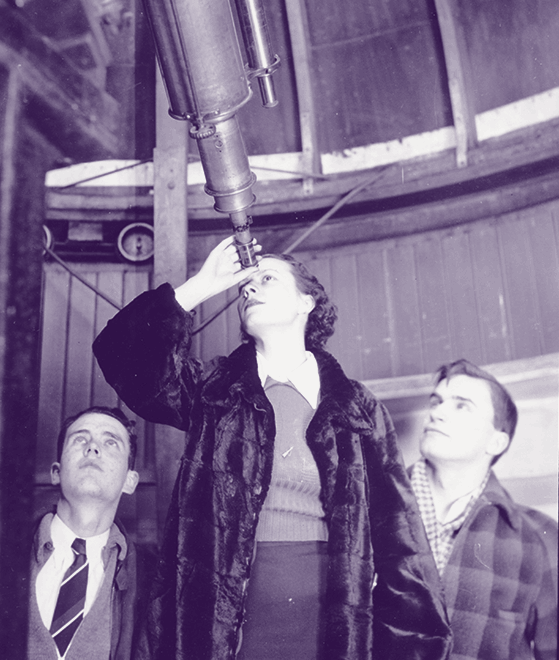

Alicia Young Herrera '03
Lafayette, California
Majors in Biology and Environmental Studies
As a Rangeland Watershed Initiative Partnership biologist, Alicia helps local landowners better benefit the environment while still meeting their needs.
Can you talk about what you’ve been doing since graduating from Knox?
After leaving Knox, I was excited to land a seasonal position with Point Blue Conservation Science, monitoring bird population response to a large-scale creek restoration project in Shasta County, California. This position immersed me in field studies, with my summers filled with back-to-back early mornings following birds to locate their nests and gathering habitat data to help understand and guide creek restoration activities. Subsequent seasonal bird-focused field positions took me to various regions in California, Costa Rica, and Australia to work with small owls, migratory and tropical bird species, and purple-crowned fairy wrens. I was hired full-time by Point Blue in 2007 as the project lead for the avian-monitoring project in Shasta County, then transitioned into the first Rangeland Watershed Initiative partner biologist in 2011 as Point Blue expanded further into the world of California working lands. I’ve now been with Point Blue for close to 15 years.
What do you do at the Rangeland Watershed Initiative?
As a senior partner biologist with Point Blue Conservation Science’s Rangeland Watershed Initiative, I work directly with farmers, ranchers, land managers, and land trusts in northern California to improve ecosystem function and promote regenerative agricultural practices on privately owned working lands. I collect data on soils, plants, and birds to help landowners and land managers make informed management decisions on their own properties, while also contributing to the larger body of knowledge of rangeland science. My position is a balanced mix of office and outdoor work. This means on any given day, I could be behind the desk using ArcGIS (a powerful mapping and analysis software program) to create ranch conservation plans, analyze ecological data, or develop grazing management plans that focus on watershed health and wildlife habitat. Or I could be out in the field collecting soil samples to measure soil carbon storage, rotating cattle from one paddock to another, or quantifying weed and perennial grass cover after a prescribed burn.
Why did you want to pursue this career?
My junior year at Knox, I participated in the 2002 inaugural Green Oaks Term. While there, I fell head-over-heels for birding and learned the transformative power of Aldo Leopold’s land ethic. After serving as the 2004 Green Oaks Term program assistant, I immediately sought positions back in my native California that could combine my passion for birds with land management and stewardship. I now spend just as much time taking soil samples and identifying plants as I do observing birds, but the heart of my position remains using science to guide and improve on-the-ground conservation outcomes for both human and wildlife communities.
What brought you to Knox?
I was adamant I was not going to just “be a number” at college—I wanted small class sizes where I could get to know my professors and fellow students. It seemed like a small liberal arts school would be a good fit for me, and when my search turned east, Knox College came up in the mix. What ultimately clinched my decision to attend Knox was the feel of the campus (beautiful small campus with on-campus housing), the ability to continue playing sports at a competitive level, the variety of electives offered, and the passion and persistence of the college recruiters.
Do any professors or experiences stick out in your memory as being especially impactful?
The Green Oaks Program, student participants, and all the professors involved played such a pivotal role in my educational and personal development. I would not be in my current career field if it were not for the conversations and experiences I had in the classroom, on the prairie, and around the campfire at Green Oaks. In particular, Jim Mountjoy (associate professor of biology) sparked my passion for birding during a crazy roadside dash to chase a displaying male American woodcock, and Stuart Allison (Watson Bartlett Professor of Biology and Conservation and Green Oaks director) helped foster my interest in conservation biology and applied science through field labs and lessons at Green Oaks.

